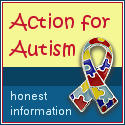Whereas the American and English media spend a lot of attention on autism awarenss month, the attention in the Dutch media was short lived. At the end of the month the Mexican Flu completely pushed the whole subject aside.
Thanks to the enormous amount of tweets and blogposts, mainly in the english language, we got a lot of questions during autism awareness month.
It can be seen that basic knowledge is more available to a broader public, because we got a large diversity of questions.
One cluster of questions was about autism at work and autism among grown-ups.
We use the word "autism", but in fact we mean the light forms of autism spectrum disorders we can find among people who are participating in the workforce. Most of them are not diagnosed.
Because knowledge about the characteristics of autism has become wider available, people with an autism spectrum disorder or autistiform behaviour are spotted more easily.
During email and other conversations irritations about having to instruct certain people over and over again, changed into the wish to assist the employee and to describe the task adjusted to the person.
Irritation changed into self-relfection and adjustments.
We gave advices which were completely focussed on individual circumstances, but a few general guidelines can be given. (You'll recognise them from those used in schools.)
- Use clear language. (Many autists take language literally)
- Use pictures, schemes, etc.
- Split complex tasks into simple ones
- Describe the final product.
- Provide clear time-schedules
- Provide time for exercise. (A well exercised skill is never lost and the investment will be earned back.)
- Ask your employee whether he's found his own way of dealing with the task. Different is not always worse.
- It should be clear when initiative is expected and to whom the employee should turn to.
- Some people night a fixed routine. They need time to adjust to breaks, to working again after a vacation.
- Not all people are able to recognize faces. Uniforms can prevent recognition of fellow employees. (Use a visible and readable badge)
- Write down appointments and other information.
- Maybe the employee needs some extra attention during breaks.
- Stay positive. That's best for everyone.







0 comments:
Post a Comment